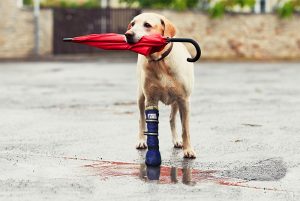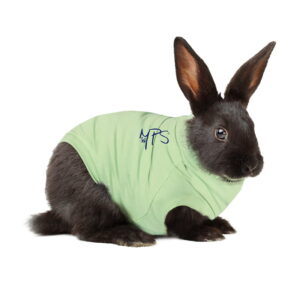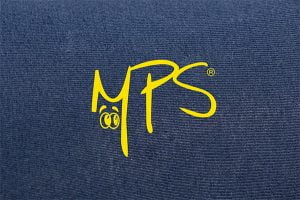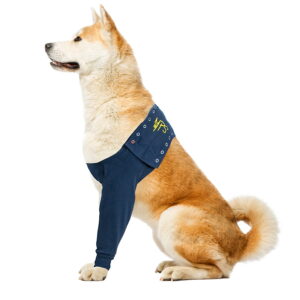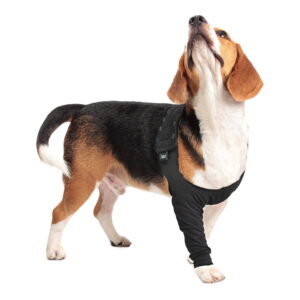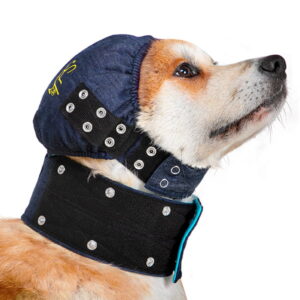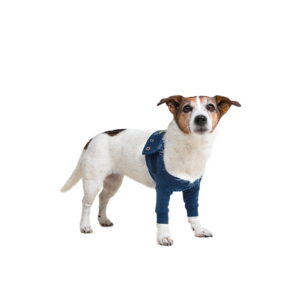How to Clean and Maintain Your Pet’s Recovery Suit
A well-cared-for recovery suit keeps wounds protected, reduces infection risk, and helps your pet heal comfortably after surgery or skin flare-ups. Below, you’ll find clear, vet-friendly guidance to wash, deodorize, dry, and maintain your pet’s recovery suit—plus brand-specific tips for Suitical and MPS, stain fixes for post-op moments, and when to replace a tired shirt.
Care-at-a-glance
- Wash on delicate, cold or up to 30°C (86°F).
- Use a pet-safe, fragrance-free, hypoallergenic detergent.
- No bleach, no fabric softener, no ironing.
- Deodorize safely: baking soda in wash, white vinegar in rinse.
- Air dry flat in the shade; avoid tumble drying.
- Rotate at least 2 suits; use liners/pads for discharge.
- Inspect daily; replace if stretched, torn, or persistently smelly.
—
Understanding Recovery Suit Materials
Most recovery suits use soft, stretchy blends (cotton with elastane/spandex or polyester). They’re breathable and snug to deter licking/scratching, but heat and harsh chemicals can damage elasticity—so gentle wash care is key.
Quick Daily Wash Steps
During recovery—especially after spay/neuter or wound care—suits pick up sweat, hair, and discharge. Daily or every-other-day cleaning helps keep the area hygienic.
1) Shake off hair and debris Take the suit outside or over a bin and give it a good shake.
2) Close fasteners Snap buttons/zips closed so they don’t snag in the wash. A laundry bag is a plus.
3) Pre-treat if needed
- Fresh blood: Rinse with cold water. Dab with a small amount of enzyme-based, fragrance-free stain remover.
- Discharge/urine: Blot, then pre-soak 10–15 minutes in cool water with 1 tsp baking soda.
4) Machine wash gentle (=30°C) Use delicate cycle with a hypoallergenic, fragrance-free detergent. Avoid bleach and fabric softener.
5) Rinse well If your machine has an extra rinse, use it—especially for pets with sensitive skin.
6) Air dry flat, in the shade Lay the suit on a clean towel. Ensure seams and thicker panels are dry before use.
Odor and Stain Fixes
Unpleasant smells usually come from bacteria, discharge, or trapped moisture.
- White vinegar in the rinse: Add ½ cup to the rinse cycle to neutralize odors.
- Baking soda in the wash: Add ¼ cup to the drum for extra odor absorption.
- Use them in sequence: Baking soda during the wash, vinegar during the rinse (don’t mix into the same water—they neutralise each other).
- Persistent blood stains: After a cold-water rinse, dab with an oxygen-based, dye-free stain remover. For light fabrics only, a small amount of 3% hydrogen peroxide can help—patch test first and rinse thoroughly.
- “Still smells?” Check seams and underarm/belly panels for damp spots and dry thoroughly. Repeat the wash+rinses.
Proper Drying Methods + Loadshedding Tips
Heat is the enemy of stretch fabrics.
- Air dry flat in shade: Sunlight can fade colours and weaken fibres.
- Avoid tumble drying: Heat reduces elasticity and fit. If you must, choose the absolute lowest heat for 10–15 minutes, then finish with air drying—occasional use only.
- Quick-dry during loadshedding:
– Press the suit inside a clean microfibre towel to remove extra water. – Place near a fan, an open window, or a dehumidifier. – Keep away from heaters or hot, direct sun.
Rotating Recovery Suits
A small rotation makes a big difference.
- Hygiene without stress: While one suit dries, the other is ready to wear.
- Longer lifespan: Fewer back-to-back wash cycles on a single suit.
- Comfortable fit: If one stretches a touch, swap to keep a snug, protective fit.
Helpful tip: Heavy discharge (e.g., C-section) or winter weather? Aim for 3 suits. Need a backup suit? Shop our 2-suit bundles and starter packs for easy rotation.
Using Liners and Pads
Liners cut down full washes and keep skin drier.
- Absorbent liners: Pop one inside the suit to catch discharge or urine.
- Secure fit: Use inner pockets/loops if present; otherwise ensure a snug suit so the liner doesn’t shift.
- Disposable vs washable: Choose what suits your routine and your pet’s skin sensitivity.
Tip: Shop reusable liners and pads to simplify clean-ups.
—
Suitical Washing Instructions
Always follow the care label on your specific Suitical product. General guidance:
- Machine wash cold or up to 30°C, gentle cycle.
- Close snaps/zips; wash in a laundry bag if possible.
- Use a mild, hypoallergenic detergent.
- Do not use fabric softener or bleach.
- Do not tumble dry or iron. Air dry flat in the shade.
- Check seams and belly panels are fully dry before re-dressing.
MPS Veterinary Recovery Shirt Care
Follow your MPS care label. Typically:
- Machine wash at 30°C on a gentle cycle.
- Close snaps/zips; a laundry bag reduces snagging.
- Mild, fragrance-free detergent only.
- No fabric softener, no bleach, no ironing.
- Air dry flat out of direct sunlight; avoid tumble drying.
—
Post-op Scenarios: Spay/Neuter, C-Section, Hot Spots
- After spay/neuter (dogs and cats):
– Expect small blood spots for 24–48 hours. Rinse cold, then wash gentle with enzyme detergent. – Wash daily; keep the incision dry and check for redness, swelling, or odour (contact your vet if you’re unsure).
- C-section discharge:
– Use liners/pads; change them frequently. – Wash suit daily; ensure nipples are dry and not irritated by detergent residue (add an extra rinse).
- Hot spots/dermatitis:
– Avoid scented detergents; fragrance can sting inflamed skin. – Keep the suit completely dry between wears. – Air the skin under supervision when your vet says it’s safe.
—
Species Notes: Dogs, Cats, Rabbits
- Dogs: Male potty panels can trap odour—rinse that section well and check for damp seams. Summer heat = wash more often.
- Cats: Cat urine odour is potent. A vinegar rinse is especially helpful; choose enzyme detergents and do an extra rinse.
- Rabbits: Very sensitive to fragrances/dyes. Hand washing with a mild, hypoallergenic detergent and thorough rinsing is safest; ensure the suit is fully dry and warm before re-dressing.
—
Choosing Safe Detergents
Your pet’s healing skin needs gentle care.
- Hypoallergenic, fragrance-free formulas only.
- Avoid essential oils, brighteners, and dyes.
- Eco-friendly, plant-based detergents that rinse clean are ideal.
- When in doubt, ask your vet for a recommendation that’s safe for open or healing skin.
—
Signs It’s Time to Replace the Suit
- Sagging or loss of elasticity = poor protection/fit.
- Tears or frayed seams compromise the barrier.
- Persistent odours even after proper washing/rinsing.
- Stains that won’t budge (can harbour bacteria).
Tip: Keep a spare new suit on standby for the rest of recovery.
—
Final Tips for Easy Maintenance
- Quick daily inspection for wear, dampness, or soiling.
- Keep a dedicated laundry bag for pet items.
- No bleach, no fabric softener, no ironing.
- Use liners to reduce full washes and protect sensitive skin.
- We ship anywhere in South Africa with trusted couriers—getting a backup suit or liners is simple and fast.
Comparing a cone vs a recovery shirt? See our guide on comfort, cleanliness, and care to choose what’s best for your pet.
—
FAQs
Q: Can I machine wash Suitical/MPS recovery shirts? A: Yes—gentle cycle, cold or up to 30°C. Close fasteners; use a laundry bag.
Q: What temperature should I use? A: 30°C or colder to protect elasticity and colour.
Q: Can I use fabric softener or bleach? A: No. They can irritate skin, trap odour, and weaken fibres.
Q: How often should I wash during recovery? A: Daily or every other day; daily if there’s discharge, summer heat, or a strong odour.
Q: Can I tumble dry a recovery suit? A: Avoid it. If absolutely necessary, lowest heat for 10–15 minutes, then finish with air drying.
Q: What detergent is safest? A: Hypoallergenic, fragrance-free, dye-free. Enzyme detergents can help with biological stains; add an extra rinse.
Q: How many recovery suits do I need? A: Two is the minimum for rotation; three for heavy discharge, winter, or loadshedding constraints.
Q: How do I remove stubborn blood/urine odours? A: Wash with baking soda in the drum, then a vinegar rinse. Check seams are fully dry.
—
This guide is general advice—always follow your vet’s specific instructions for your pet’s surgery and recovery. If you notice swelling, heat, pus, strong odour, or your pet seems in pain, contact your vet promptly.
Need a backup suit or liners today? Explore our Medical Recovery range, including Suitical at-home Recovery and the MPS Veterinary Range, plus reusable pads and starter kits to make recovery simpler for you and safer for your pet.

